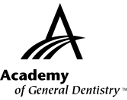|
Exercise No. 380
Subject Code: 671
Complete Dentures
The 15 questions for this exercise are based on the article Effect of toothbrushes and denture brushes on heat-polymerized acrylic resins on pages 49-53. This exercise was developed by Anthony S. Carroccia, DDS, MAGD, ABGD, in association with the General Dentistry Self-Instruction committee.
|
Reading the article and successfully completing this exercise will enable you to:
- understand characteristics of acrylic resin denture bases;
- know how dentifrice and/or brush selection may impact abrasion; and
- understand potential negative effects of denture hygiene.
|

